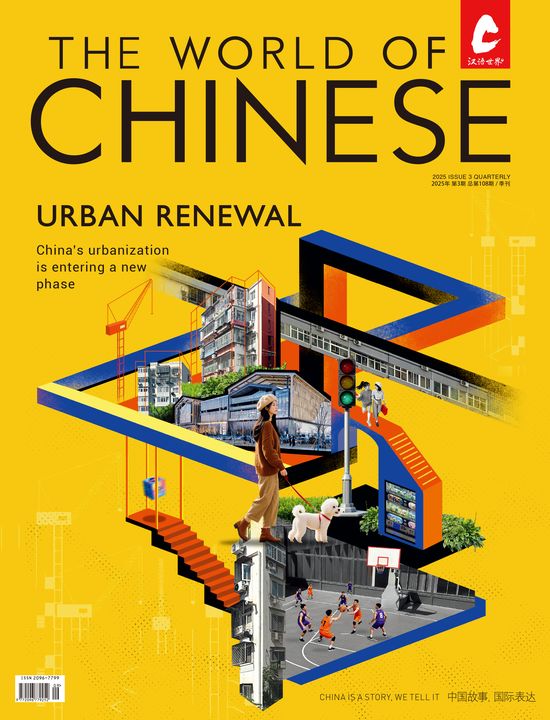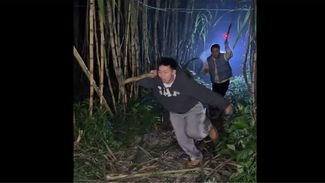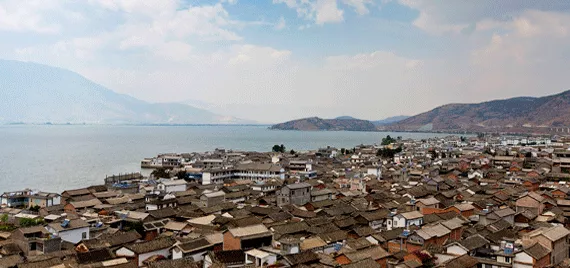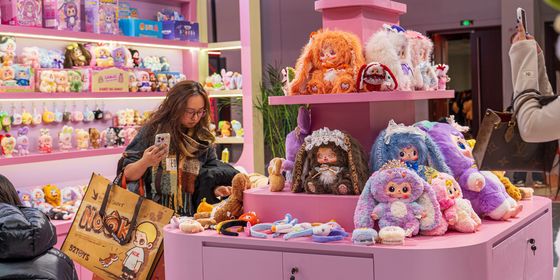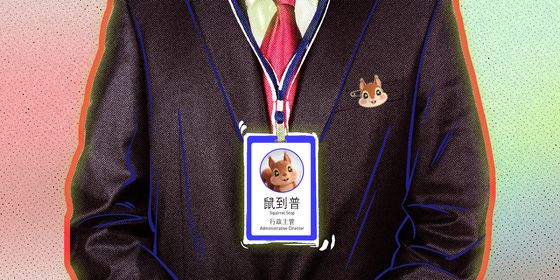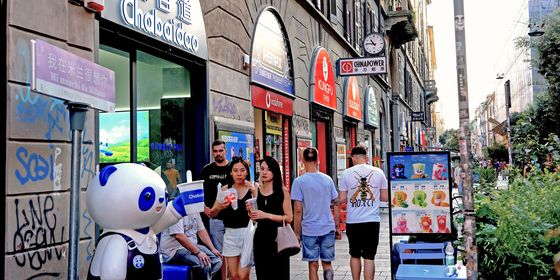Where progress and development can take a break
If an ancient town in China is well-preserved today, it is fated to be “developed”: roads are smoothed with new concrete, ancient and historical buildings are replaced by new imitations, local markets are replaced by stalls selling cheap souvenirs and locals are evacuated to make room for a flood of tourists and businesses.
Luckily, Dali is an exception in all these aspects. Unlike Beijing, where the old town constantly battles for space with high-rises (and always loses), Dali built its new town away from the old town, keeping its history intact. Also, unlike its sister town Lijiang where most of the native Naxi ethnic people have gone, the dominant population of Dali still consists of the Bai ethnic group, a minority that has called the area home since antiquity.
From the founding of the Nanzhao Dynasty in 738 to the Mongolian Empire’s invasion in 1254, Yunnan Province (and some of the bordering areas) was a sovereign kingdom of its own. Dynasties rose and fell, but Dali was always the capital. Dali’s old town as we see it today was first built in 1382, and its contemporary pattern of streets and alleyways remain unchanged from as early as the Ming Dynasty (1368-1644).
The city moves at a sleepy, unpunctuated pace. Rather than submitting to the constant roll of development and progress, Dali tends to assimilate those who go there. Young people who come here to open a bar or a hostel invariably end up as part of the town, their spirit of industry and ambition sapped by beauty and peace. They get up late, go to vegetable markets with bamboo baskets on their backs and take frequent breaks from work, because they need to rest or travel. In absence of that great pressure, the hunger for entertainment in Dali just isn’t there. By ten at night, when other cities start their raucous nightlife, Dali is already dark, quiet and asleep.
Nestled between Cangshan Mountain (苍山) in the west and Erhai Lake (洱海) in the east, the town is constantly windy, and the temperature varies greatly over the course of the day, so a windproof coat is a must. Besides that, Dali is perfect for a stroll. You’re not likely to get lost either, as the town is divided by straight chessboard-like roads. If you do lose your way, don’t worry about it. You’re in Dali.
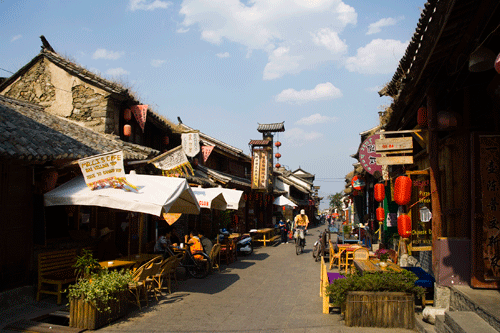
Narrow alleys of ancient Dali bustle with activity
Day One
8:00 Getting Settled
You have to know two districts in Dali: Xiaguan (下关) and Shangguan (上关). The airport and the train station are both located in Xiaguan, the modern part of Dali. The ancient town of Dali is located in Shangguan, which is more often referred to as gucheng (古城) by locals. Hundreds of inns and hotels densely line the streets of gucheng, and they are especially concentrated in the narrow and lively Renmin Road (人民路). If you prefer the quiet, explore the backstreets around Renmin Road, or head to Yincang Road (银苍路) to find a hidden courtyard inn.
To get from the train station to the old town, take Bus Eight to arrive at Cangshan Gate (苍山门), where most parts of gucheng are within walking distance. There is no public transportation between the airport and gucheng, and a taxi costs around 80 RMB.
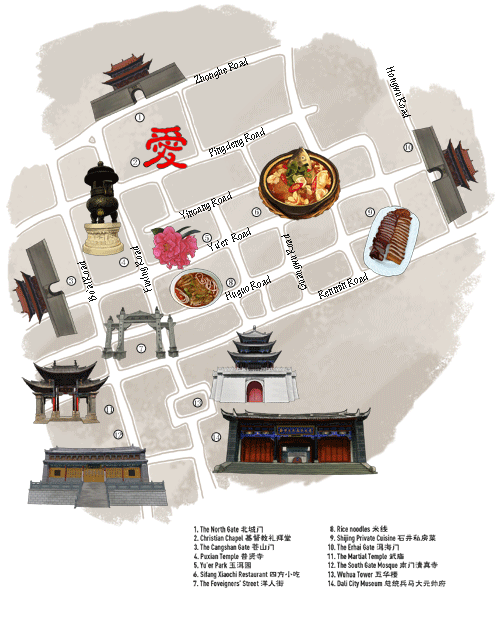

Ornate decorations are found on traditional Bai homes
9:00 Breakfast
Dali wakes up late. At 9:00 a.m. most shops are still closed, but you can still find mobile breakfast carts in the streets, and some small restaurants also serve early. The local breakfast specialties include bean powder congee (稀豆粉 xīdòufěn) and roasted rice pastries (烤饵块 kǎo’ěrkuài).
9:30 The Stroll
I highly recommend trekking through Dali’s old town without a map. However, as my editor is making me, I have to offer a stroll route that can cover as many interesting places as possible. So, start your stroll from the west end of Yu’er Road (玉洱路) right under Cangshan Gate. Yu’er Road is a pivotal road that runs straight through Dali, connecting Cangshan Gate in the west and Erhai Gate (洱海门) in the east. It is also a border for the obscure but more local alleyways to its north and the bustling commercial streets to its south. Go down the road, past a few antique shops, and you can turn right onto Bo’ai Road (博爱路). It’s necessary to note that, on a map of gucheng, a prominent “road” is—in most cases—just a narrow alleyway that you can easily miss. Along the road you can find the biggest vegetable market in town and a string of tailor shops that sell clothes made of hand-woven cloth.
10:00 The Northern Gate
Take an eastern turn when you come to the crossing of Bo’ai Road and Zhonghe Road (中和路). In just two minutes you will be in front of the Northern City Wall Gate. You may notice that all of Dali’s city wall gates are actually quite new. Dali was not spared the nationwide destruction of its ancient city walls in the 1950s.
Head through the gate’s archway on to Fuxing Road (复兴路) which leads to a small, 110-year-old Christian chapel (基督教礼拜堂) built in the distinct Bai ethnic architectural style. Turn east at the road’s junction with Yu’er Road and you will find Puxian Temple (普贤寺), dedicated to Samantabhadra, one of the Four Great Buddhisavas of the Chinese branch of Buddhism. Here, you can fearlessly walk in without being bothered by monks obliging you to buy candles. A little further down the street is the small but exuberantly blooming Yu’er Park (玉洱园).
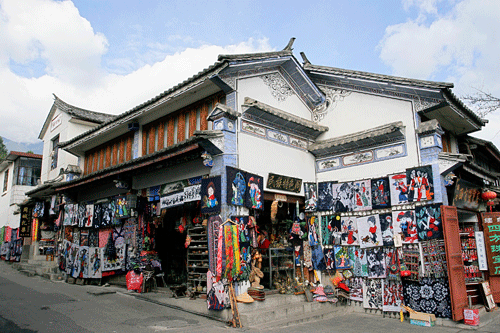
Crafts abound on every corner in this peaceful city
11:00 Yincang Road
Go out of the back gate of Yu’er Park and you are in a quiet alleyway called Yincang Road (银苍路). It is a good place to look at traditional Bai ethnic residences, which are adorned with beautiful engravings on the gate, painted walls and lush plants over the fence walls.
11:30 Renmin Road
Keep walking east and then turn south when you reach Hongwu Road (洪武路) and you will arrive at Erhai Gate. Go under the gate and you are at the quieter end of Renmin Road, one of the most famous commercial streets in Dali. It’s packed with clothing shops, restaurants, bookstores, hostels and street peddlers. Sometimes its side streets lead to ancient homes with crumbling stone walls and sometimes overly busy, colorful bazaars. The street is not as touristy and as you might imagine, but it is a place where you can find traditional Bai embroidery and handicrafts made by young, innovative designers.
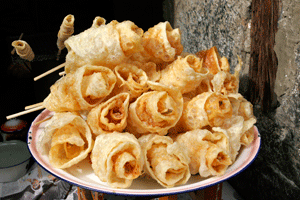
Fried milk fans are a delious delicacy
in the streets of Dali
12:00 Lunch
Cut to Huguo Road (护国路) parallel to Renmin Road through Guangwu Road (光武路), and there is a Guizhou rice noodle restaurant (贵州六盘水羊肉米线). Its rice noodles in lamb soup are extremely popular. However, dining on Huguo Road at noon is difficult as there are two middle schools nearby and the students will flood the street immediately after 12:00. Another good option is Miaoxiangyuan Bai Ethnic Restaurant (妙香园白族菜馆). Recommended dishes include fried milk fans (炸乳扇 zhárǔshàn), yellow stewed chicken (黄焖鸡 huángmènjī) and eggs stir-fried with roses (玫瑰花炒鸡蛋 méiguihuā chǎojīdàn).
13:00 Shopping
The central commercial zone of Dali consists of Renmin Road, Foreigners’ Street (洋人街 Yángrén jiē) and the Wuhua Tower (五华楼) area. You will see a lot of handmade commodities here, especially tie-dye (扎染 zārǎn ) cloth. The Bai group in Dali are known for their expertise in tie-dye. Before they dye a piece of cloth, they seal up tiny knots on it with threads and unseal the threads after the dye is done, making extravagant patterns. If you’re in the mood for a cheesy snack, Yang’s Milk Fan (杨记乳扇) at the crossing of Renmin Road and Bo’ai Road is the best in town. South of Wuhua Tower is the Dali City Museum which was once the headquarters of Du Wenxiu (杜文秀), a member of the Hui ethnic group, who led a Muslim revolt against the Qing government in 1856 and reigned Dali for 16 years. A block away from Wuhua Tower to the west is the South Gate Mosque (南门清真寺) and the Martial Temple (武庙).
15:00 Three Pagodas of Chongsheng Mo nastery
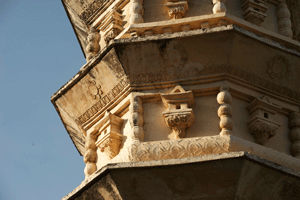
Dali’s famous pagoda up close and personal
The Three Towers of Chongsheng Monastery (崇圣寺三塔) is located to the northwest of the old town. The three towers the monastery is famous for were built in the Nanzhao Dynasty (738-902) and Dali Kingdom Period (937-1254). The Chongsheng Monastery that surrounds them was destroyed during the Qing Dynasty (1616-1911); only the towers remain as testimony to Buddhism’s heyday in Dali. Buddhism used to be so prevalent that nine of the Dali Kingdom’s kings abdicated to become abbots at Chongsheng Monastery. An entrance ticket, costing 121 RMB, includes entry to the Three Towers and the Three Towers Reflection Park (三塔倒影公园) nearby. The park, as its name suggests, is heaven for photographers, providing a decent angle and sufficient distance to shoot the towers and their reflections in the lake.
17:30 Dinner
In Sifang Xiaochi (四方小吃) on Yu’er Road, much like many Yunnan minority restaurants, there is no menu; just go to the refrigerator and order whatever looks good. Recommended dishes include assorted vegetables and, of course, the salted pork pot (腊肉砂锅 làròu shāguō). The restaurant is easy to spot; it has a waterwheel model in front of it.
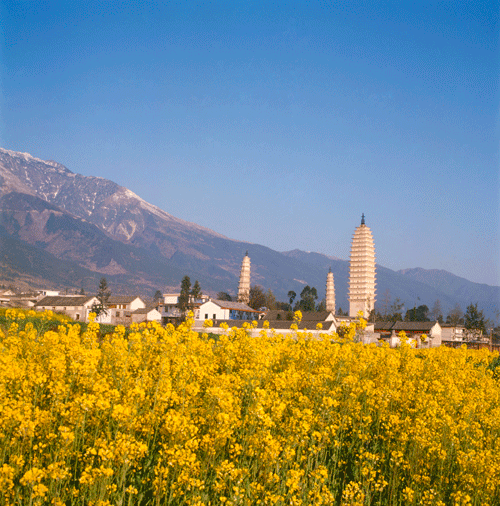
The Three Towers of Chongsheng Monastery burst out of the Dali landscape
Day Two
9:00 Erhai Lake
The Erhai Lake to the east of gucheng literally translates as “Ear Sea” because its shape resembles an ear or a waning crescent moon. It nourished the earliest Bai tribes before any kingdom took hold of Yunnan Province. Over 42-kilometers-long, it is the second largest fresh water lake in Yunnan Province. The Dali government has done a decent job in protecting the lake: vast acres of farms, residential areas and ponds have all been bought out, returning them to the lake and the wetlands. If you want to spend three hours sailing on this gigantic emerald, get up early to catch a bus to Erhai Park (洱海公园) in Xiaguan. At the gate of the park, there is a booth selling tickets to the Erhai Lake cruise. The ship sets sail from the southernmost tip of Erhai and docks at Taoyuan Pier (桃源码头) in the north of the lake. The ship only sets out once a day at 9:00 a.m. with tickets priced at 142 RMB. If you don’t want to take all the trouble to go to Xiaguan, you can take Bus2 to Caicun Pier (才村码头) on the west side of Erhai, which is closer to the old town and good for a lakeside stroll. If you want, you can also spend a day hiking Cangshan Mountain. Access to the mountain closest to town is at the Yuantong Cableway (圆通索道) entrance by Yuantong Temple (圆通寺).
12:30 Zhoucheng Town
If you get off at Taoyuan Pier, take an (illegal) taxi to Zhoucheng Town (周城) for 5 RMB. Located 23 kilometers north of Dali, gucheng, the old town, is the largest Bai ethnic village in the Dali area much more worthwhile than the more advertised tourist spots like the Butterfly Spring (蝴蝶泉 Húdié Quán) or Xizhou Town (喜洲) nearby. On entering the town, there is a vegetable market sprawling around an ancient open theater. The pagoda tree in front of the theater looks ancient, accentuated by local elders permanently smoking and chatting in the shade. Following winding paths further inside the town, you will see splendid Bai ethnic courtyards and temples. On a sunny day, many courtyards will be sunning their newly-dyed cloths, as many Zhoucheng families are tie-dye workshops. What’s more, you may be the only traveler in the town. As for lunch, you can pick any restaurant in Zhoucheng to have a bowl of noodles.
17:30 Dinner
Go back to gucheng and fill up at Shijing Private Cuisine (石井私房菜) for some roasted pork (烤肉 kǎoròu) and sour-spicy fish (酸辣鱼 suānlàyú). It’s a little hard to find; go to the eastern end of Huguo Road and then turn north and walk for about 20 meters. It’s worth searching for, just like Dali’s old town.
